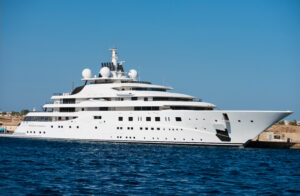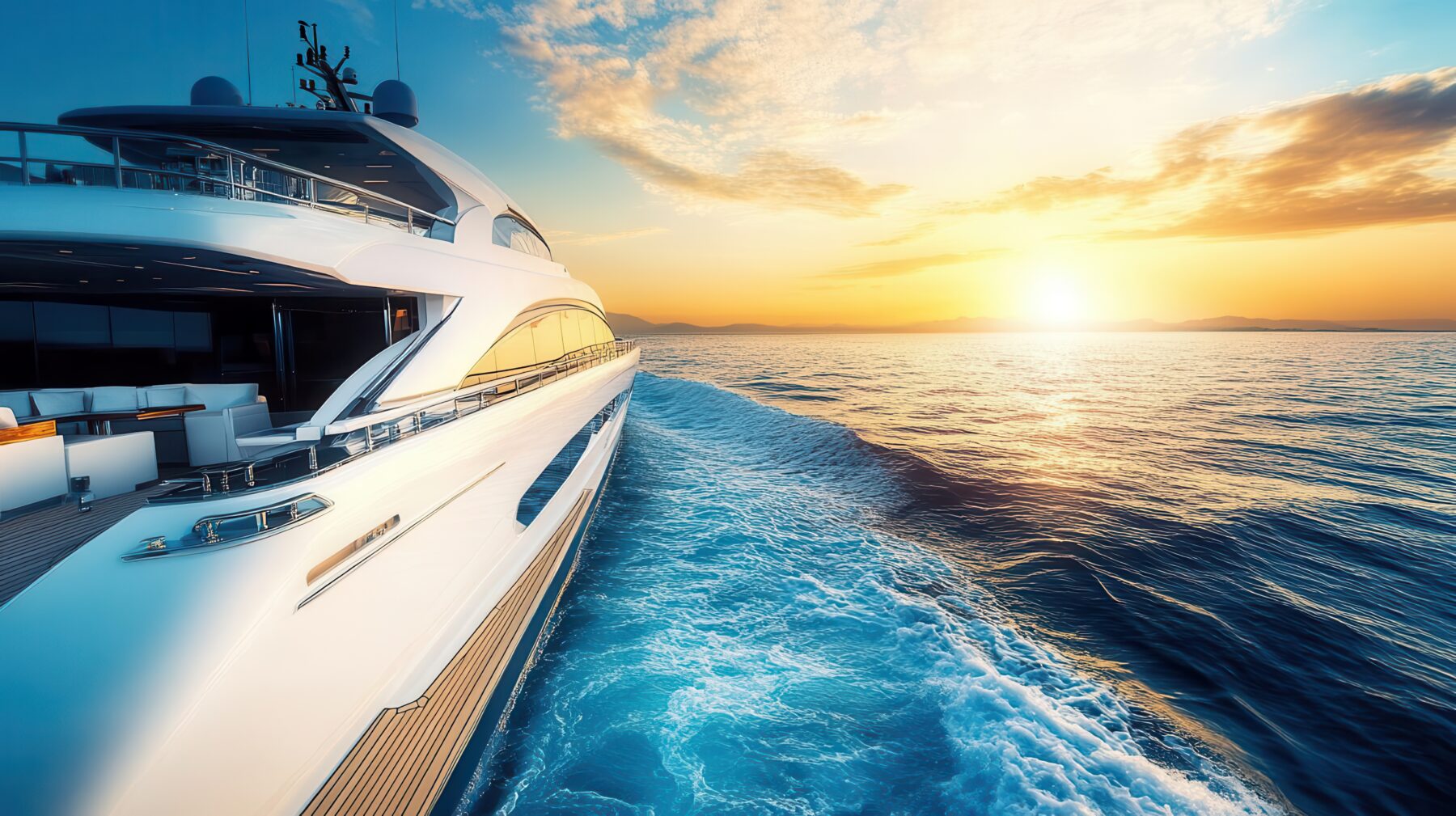Yachting loves its acronyms! But how many do you really know? From regulatory bodies and training accreditors to key yachting associations – these acronyms aren’t just useful to know, they’re essential for clear communication onboard.
To help you out and to ensure the safety of everyone onboard, we’ve compiled a list of essential acronyms you’ll need to know.
Read on for the essential list and brush up on your yachting knowledge with The Crew Academy’s full range of training courses built especially for yacht crew.
Key Authorities

In the yachting industry, there are a large number of regulatory bodies and authorities that play vital roles in ensuring safety, compliance, and professional standards.
These organisations establish and enforce regulations that govern various aspects of yachting, including crew welfare, vessel safety, and environmental protection.
As a crew member, it is essential to familiarise yourself with these organisations and their corresponding acronyms. Here are a few of the key ones you should know:
-
- IACS – (International Association of Classification Societies) sets and maintains technical standards for vessels to promote safety at sea and protect the marine environment.
- IMO – (International Maritime Organisation) is the UN’s agency responsible for the safety and security of shipping and the prevention of marine and atmospheric pollution by ships.
- ISAWN – (International Seafarers’ Welfare & Assistance) is an international charity dedicated to improving the lives of seafarers by providing support services to address their welfare concerns around the world.
- MARPOL – (International Convention for the Prevention of Pollution from Ships) is a treaty established by the IMO to prevent marine pollution caused by ships by setting standards for the discharge of waste and harmful substances from vessels at sea.
- MCA – (Maritime and Coastguard Agency) is a government agency who provides a 24-hour search and rescue and response service for the United Kingdom.
- MLC – (Maritime Labour Convention) is an international agreement that sets minimum standards for the working and living conditions of seafarers.
- PSC – (Port State Control) is essentially a system of inspections that allow countries to verify that foreign-flagged ships visiting their ports comply with international maritime regulations.
-
- PYA – (Professional Yachting Association) is a non-profit association with the primary mission to represent the interests of professional yacht crew from around the world.
- SYBAss – (Superyacht Builders Association) is an organisation that unites and represents superyacht builders around the world.
Acronyms used onboard
Understanding common acronyms used onboard is essential for seamless communication and, more importantly, safety. Even though you’ll likely pick up the lingo over time, learning it ahead of time will prevent unnecessary confusion.
These abbreviations represent critical systems, procedures, and equipment vital for the smooth and safe operation of the vessel.
So, let’s decode some of the essential acronyms that every new crew member should know:
- AIS – (Automatic Identification System) is a tracking system that uses transceivers to automatically share information about a ship’s position, course, speed, and more.
- EPIRB – (Emergency Position Indication Radio Beacon) is a small electronic device and a vital piece of safety equipment carried to help search and rescue authorities find people in distress.
- FFA – (Fire Fighting Appliances)
- GMDSS – (Global Maritime Distress and Safety System) is an international system of communication protocols, equipment, and procedures designed to enhance maritime safety and facilitate rapid search and rescue operations.
- ISPS – (International Ship and Port Facility Security Code) is a set of measures designed to enhance maritime security. It aims to detect security threats and implement preventive measures.
- LSA – (Life-Saving Appliances) refers to the equipment on a vessel designed to save lives in an emergency situation, including items like lifeboats, life rafts, lifejackets, lifebuoys, and immersion suits.
- SAR – (Search and Rescue) is a general term that encompasses the operations involved in locating and assisting people who are in distress, whether on land, or at sea.
- SART – (Search and Rescue Transponder) is a waterproof, battery- operated device, enabling rescuers to quickly and accurately pinpoint the location of individuals in distress.
- SOLAS – (International Convention for the Safety of Life at Sea) is a crucial treaty that sets the minimum standards for the construction, equipment, and operation of merchant ships to ensure their safety while at sea.
- SOS – (International distress signal)
Accreditation and Training Bodies

When you undertake yacht training of any kind, it is important that you do so through industry recognised accrediting bodies, this way you can be confident that you are receiving a certification of the highest standard.
Understanding the roles of these organisations is crucial to both your professional development and your career progression.
Here are some of the key players within the industry:
- GUEST – (Guidelines for Excellence in Superyacht Training) is the leading internationally recognised qualification body for non-mandatory training & professional development onboard superyachts.
- IAMI – (International Association of Maritime Institutions) is a network of worldwide maritime training institutions who facilitate training and education across the maritime industry.
- IMCI – (International Marine Certification Institute) is an independent European organisation that provides certification for recreational yachts, verifying compliance with safety standards.
- KELP – (Knowledge Enhancement & Learning Platform) is an innovative and unparalleled HR, knowledge management, learning and development platform designed to fuel growth within the superyacht industry.
- TCA – (The Crew Academy) is a training provider specialising in courses for the superyacht industry with the main aim to empower crew members with the essential skills and qualifications needed to excel in their career.
- YCRT – (Yacht Crew Recruitment & Training) is the only company in yachting that manages the complete crew lifecycle. From recruitment and training to career development, ensuring the creation of stronger, happier, and more effective crew.
If you are thinking about getting into yachting but not sure how to get started, read our article; how to get started in yachting.
Crew Certifications
It’s important for you to understand the necessary certifications you’ll need to not only start your first role, but it’s also important to know what qualifications you need to progress into a more senior role.
Some certifications, like the STCW and ENG1, are non-negotiable and every member on board must hold them, whereas others like the CoC represent milestones for career advancement.
Here is a rundown of the ones you’ll need to understand for career progression:
- AEC 1 & 2 – (Approved Engine Course) is a training course for engineers, providing them with the essential knowledge and skills to operate yacht engine systems.
- CoC – (Certificate of Competency) is a document that officially verifies an individual’s knowledge and skills in a specific field,
- COE – (Certificate of Endorsement) is a document issued by a maritime authority to verify that a seafarer’s CoC issued by another country meets the standards and requirements of the specific flag state where they intend to work.
- ENG1 – (Medical Fitness Certificate for Seafarers) is a certificate which confirms that a crew member is medically fit to work onboard and doesn’t have a medical condition that could be a danger to other crew, passengers or the vessel.
- Master 500 & 3000 – is a certification for yacht captains, indicating the maximum gross tonnage (GT) they are qualified to command – a “Master 500” can captain yachts up to 500 GT, while a “Master 3000” can command yachts up to 3000 GT.
- OOW – (Officer of the Watch) signifies that an individual has met the required standards of competency to safely navigate and operate a vessel during their watch period.
- STCW – (Standards of Training, Certification and Watch Keeping) compliance with STCW is mandatory; no crew member can board a vessel without the certification, this ensures they are adequately trained to perform their duties safely and effectively.
- WSET – (Wine & Spirit Education Trust) is an advanced qualification designed for professionals in the wine and spirits industry, and indicates a commitment to in-depth knowledge and professional development.
- Y4 / Y3 / Y2 / Y1 – are advanced engineering certifications, each level signifies the engineer’s ability to handle more sophisticated machinery, perform advanced troubleshooting, and oversee larger and more complex engine rooms.
Next Steps:
We’ve covered a lot of ground with all these yachting acronyms, and hopefully, you now have a clearer understanding of what they mean and why they’re important.
Knowing these terms isn’t just about memorising letters; it’s about understanding the regulations, training, and everyday operations that keep yachts running smoothly and safely.
Learn more of the essential knowledge it takes to succeed in yachting in The Crew Academy’s IAMI GUEST accredited Introduction to Yachting & Yachting Life program and view the full list of courses here.
For any questions about any of our programs, contact info@yachtcrew.uk.


